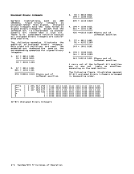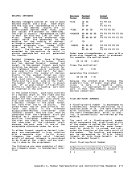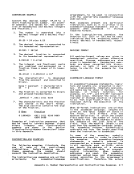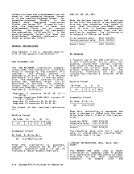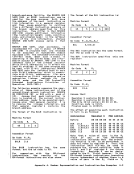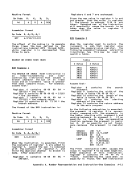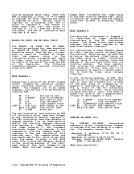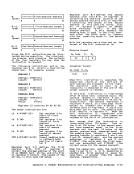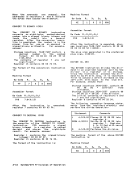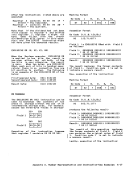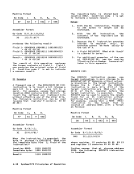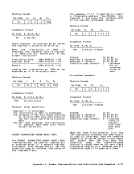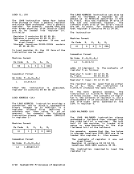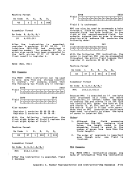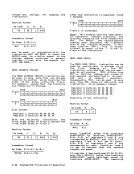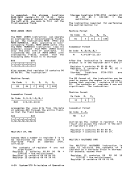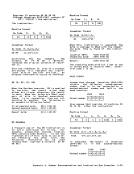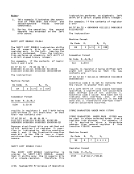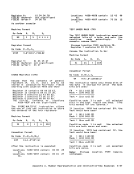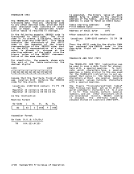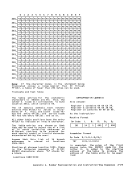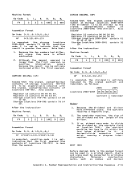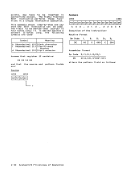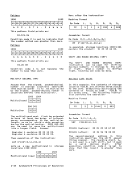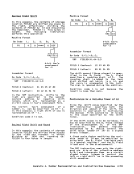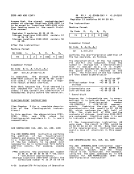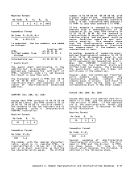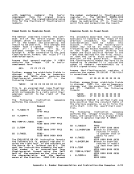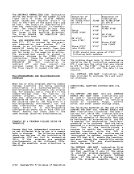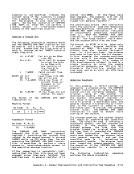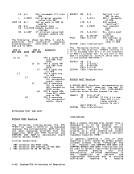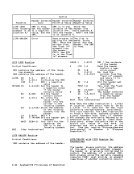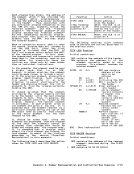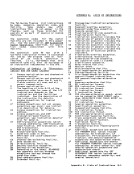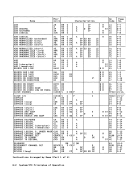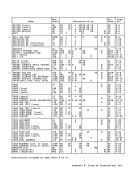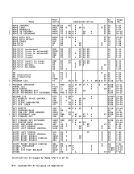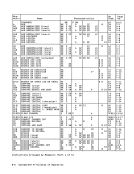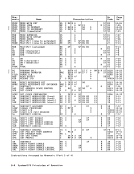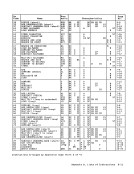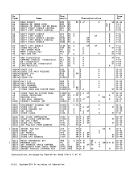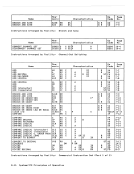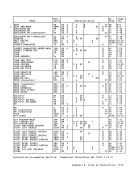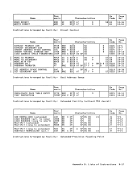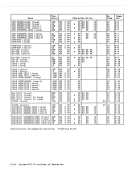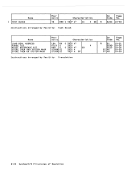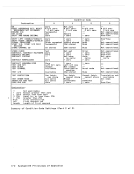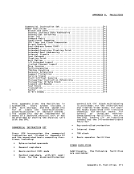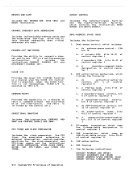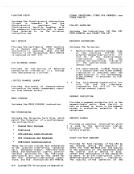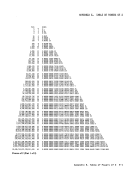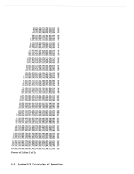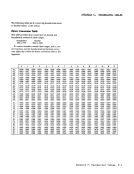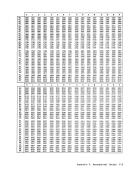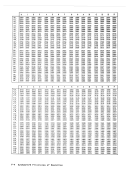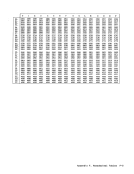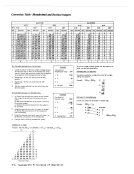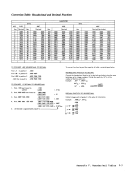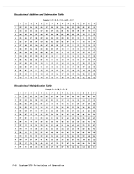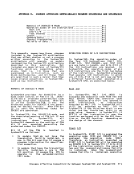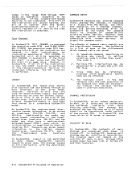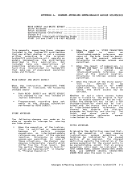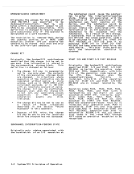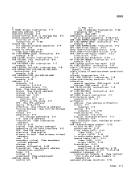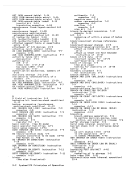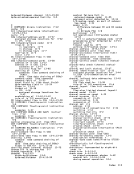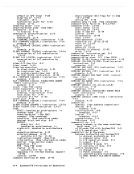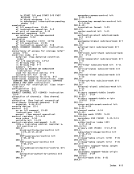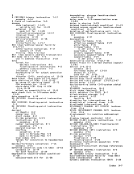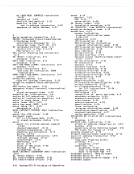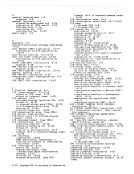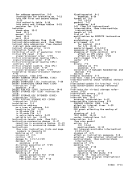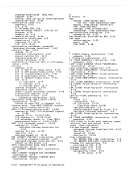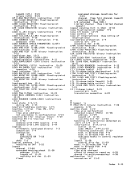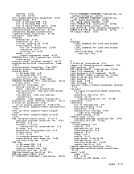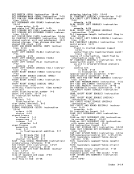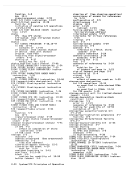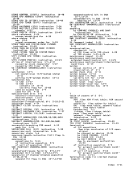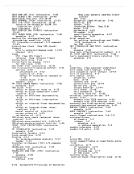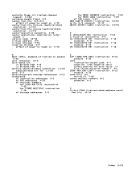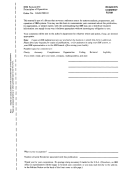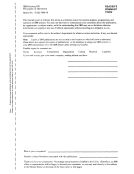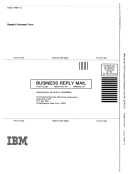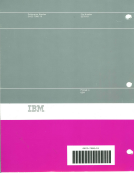Programming Notes
1. The definition for data exception
permits termination when digit
codes are invalid but no sign code
is invalid.On some models, valid
digit codes may be placed in the
result field even if the original
contents were invalid. Thus it is
possible, aftera data exception
occurs, for all fields to contain
valid codes.
2. An invalid sign code for the right
most byte of the result field is
not generated when the operation is
terminated. However, an invalid
second-operand sign code is not
necessarily preserved when it is
located in the numeric portion of
the result field.
3. When, after a program interruption
for data exception, a sign code is
found to be invalid, the operation
has been suppressed if both of the
following conditions are met:
a. The invalid sign of the source
field is not located in the
numeric portion of the result
field.
b. The invalid sign code is in a
position specified by the
instruction to be checked for a
valid sign. (This condition
excludes the firstoperand of ZERO AND ADD, both operands of
EDIT, and EDITAND MARK.)
Decimal-Divide Exception
A decimal-divide exception is recognized
when in decimal division the divisor is
zero or the quotientexceeds the speci
fied data-field size.
The decimal-divide exception is indi
cated only ifthe sign codes of both the
divisor and dividendare valid and only if the digit or digits uscd in estab
lishing the exceptionare valid.
The operation is suppressed.The instruction-length code is 2 or 3.
The decimal-divide exception is indi
cated by a program-interruption code ofOOOB hex (or OOBB hex if a concurrent PER event is indicated). Decimal-Overflow Exception
A decimal-overflow exception is recog
nized when one or more nonzero digits
are lost because the destination field
in a decimal operation is too short to
contain the result.
The interruption may be disallowed by
the decimal-overflow mask (PSW bit 21 in
theEC mode and PSW bit 37 in the BC mode).
The operation is completed. The result
1S obtained by ignoring the overflow
digits, and condition code 3 is set.
The instruction-length code is 2 or 3.
The decimal-overflow exception is indi
cated by a program-interruption code ofOOOA hex (or 008A hex if a concurrent PER event is indicated).
Execute Exception
The execute exception is recognized when
the target instruction ofEXECUTE is
anotherEXECUTE. The operation is suppressed.
The instruction-length code is 2.
The execute exception is indicated by a
program-interruption code of0003 hex
(or0083 hex if a concurrent PER event
is indicated).
Exponent-Overflow Exception
An exponent-overflow exception is recog
nized when the result characteristic of
a floating-point operation exceeds 127and the result fraction is not zero. The operation is completed. The frac
tion is normalized, andthe sign and
fraction of the result remain correct.
The result characteristic is made 128
smaller thanthe correct characteristic.
The instruction-length code is 1 or 2.
The exponent-overflow exception is indicated by a program-interruption code of XXOC hex (or XX8C hex if a concurrent PER event is indicated), where XX is the
exception-extension code.
Exponent-Underflow Exception
An exponent-underflow exception is re
cognized when the result characteristic
of a floating-point operation isless than zero and the result fraction is not
zero. For an extended-format floating
point result, exponent underflow isChapter 6. Interruptions 6-19
1. The definition for data exception
permits termination when digit
codes are invalid but no sign code
is invalid.
digit codes may be placed in the
result field even if the original
contents were invalid. Thus it is
possible, after
occurs, for all fields to contain
valid codes.
2. An invalid sign code for the right
most byte of the result field is
not generated when the operation is
terminated. However, an invalid
second-operand sign code is not
necessarily preserved when it is
located in the numeric portion of
the result field.
3. When, after a program interruption
for data exception, a sign code is
found to be invalid, the operation
has been suppressed if both of the
following conditions are met:
a. The invalid sign of the source
field is not located in the
numeric portion of the result
field.
b. The invalid sign code is in a
position specified by the
instruction to be checked for a
valid sign. (This condition
excludes the first
EDIT, and EDIT
Decimal-Divide Exception
A decimal-divide exception is recognized
when in decimal division the divisor is
zero or the quotient
fied data-field size.
The decimal-divide exception is indi
cated only if
divisor and dividend
lishing the exception
The operation is suppressed.
The decimal-divide exception is indi
cated by a program-interruption code of
A decimal-overflow exception is recog
nized when one or more nonzero digits
are lost because the destination field
in a decimal operation is too short to
contain the result.
The interruption may be disallowed by
the decimal-overflow mask (PSW bit 21 in
the
The operation is completed. The result
1S obtained by ignoring the overflow
digits, and condition code 3 is set.
The instruction-length code is 2 or 3.
The decimal-overflow exception is indi
cated by a program-interruption code of
Execute Exception
The execute exception is recognized when
the target instruction of
another
The instruction-length code is 2.
The execute exception is indicated by a
program-interruption code of
(or
is indicated).
Exponent-Overflow Exception
An exponent-overflow exception is recog
nized when the result characteristic of
a floating-point operation exceeds 127
tion is normalized, and
fraction of the result remain correct.
The result characteristic is made 128
smaller than
The instruction-length code is 1 or 2.
The exponent-overflow exception is indi
exception-extension code.
Exponent-Underflow Exception
An exponent-underflow exception is re
cognized when the result characteristic
of a floating-point operation is
zero. For an extended-format floating
point result, exponent underflow is
























































































































































































































































































































































































































































